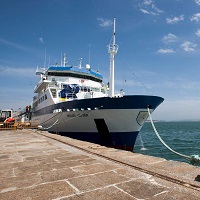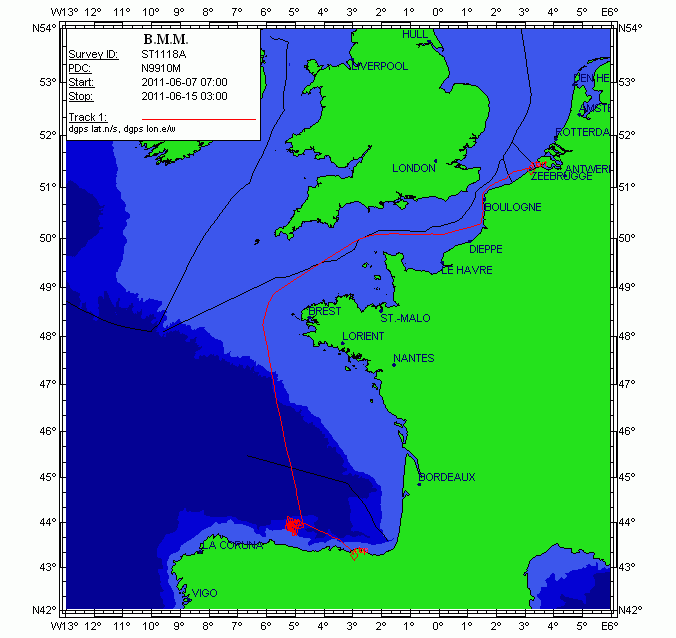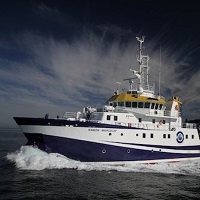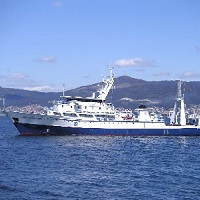Keyword
centrifuges
21 record(s)
Type of resources
Categories
Topics
INSPIRE themes
Keywords
Contact for the resource
Provided by
Years
Formats
Status
-

Study of strategies to reduce discards and unwanted species: selectivity and survival in trawling in Cantabrian-Northwest zone.
-

This cruise aims to investigate the seismic stratigraphy and palaeoceanographic evolution of the Le Danois contourite depositional system (Van Rooij et al., 2010), at several locations in the Le Danois "intraslope basin". Previous research (R/V Belgica in 2004, among others) has highlighted a significant correlation with the Cadiz CDS, suggesting a nearly simultaneous control by the Mediterranean Outflow Water since the Early Pliocene. As such, the Le Danois CDS is the only location in the Bay of Biscay where high-resolution climate change (e.g. bottom currents) may be recorded in a continuous way. It will assist in better constrain the role of the MOW in the thermohaline circulation system. Therefore, this large-scale sediment body is an ideal target for (a) investigating the MOW palaeoceanography within the NE Atlantic basin and (b) a palaeoclimatologic reconstruction of the Cantabrian margin. The main objective of this campaign is to acquire additional geophysical data which will give more insight in the construction and 3D evolution of this sedimentary deposit. This campaign will be executed in close cooperation with the Proyecto Coordinado CONTOURIBER (CTM 2008-06399-C04/MAR), with invited researchers from Spanish research institutes. More specifically, R/V Belgica ST1118a aims to perform: 1.High-resolution single channel sparker seismic profiling: investigation of the stratigraphic framework and the sedimentary environment in the western part of the intraslope basin between the Vizco High (west), the Lastras canyon system (east), Le Danois bank (north) and the Asturias slope (south). This will mainly focus on the lateral and temporal evolution of Le Danois drift and the Gijon drift and their interaction. The location of these profiles is determined based on industrial multichannel airgun profiles, in order to compare seismic methods with different penetration depths and seismic resolutions. We are very grateful to TGS-NOPEC for allowing us to use a large unpublished data set of seismic records from the Cantabrian Sea. 2.Hydrography: at specific sites in the intraslope basin, CTD casts will aim to better map the presence and behavior of the Mediterranean Outflow Water within the main elements of the Gijon and Le Danois drifts. The newly acquired Seapoint turbidity sensor will be able to indicate regions of active sediment transport within the Le Danois CDS. Multibeam bathymetry with the Belgica EM1002 will be only be used as a backup in case of spare time or failure of the other methods. The proponents are aware of the Marine Protected Area status of the Le Danois Bank, and will be vigilant to respect the guidelines of conducting scientific research. In order to ensure vigilance with respect to marine mammals, a team of whale watchers of MUMM, ULg (Belgium), CRMM (France) and OCEAMM (France) will be participating. This part of the campaign is a cooperation between the RCMG (UGent), the University of Vigo, the Geological Survey of Spain (IGME), the Spanish Oceanographic Institute (IEO), the Spanish Institute of Marine Sciences (CMIMA-CSIC) and the University of Cádiz.
-

Study of strategies to reduce discards and unwanted species: selectivity and survival in trawling in Cantabrian-Northwest zone.
-

Study of strategies to reduce discards and unwanted species: selectivity and survival in trawling in Cantabrian-Northwest zone.
-

Study of strategies to reduce discards and unwanted species: selectivity and survival in trawling in Cantabrian-Northwest zone.
-

Multibeam bathymetic survey, high resolution seismic profiles and characterization of seabed and habitats of the continental slope of Murcia
-

The objective of this campaign is the sampling of sediments. These sediments will be used to assess the organic and inorganic pollutants in the marine area, as well as the possible biological effects of contaminants. In this survey, along with the traditional pollutants, the presence of microplastics in sediments will also be evaluated.
-

Study the role of B vitamins on the community structure, activity and succesion of the microbial plankton in a coastal upwelling system.
-

The cruise RadProf201209 is part of the timeseries program from the Spanish Institute of Oceanography (IEO) following international strategies for ocean climate monitoring (CLIVAR, GOOS etc). It covers a hydrographical section westwards of Cape Finisterre in Northwest Spain along the 43ºN latitude, extending c.a. 250 nm into the western Iberia basin. The sampling includes hydrography, current velocity fields and water samples collection for biogeopchemical analysis. It is planned the deployment of a mooring line at 43ºN; 11ºW, at a site where current measurements timeseries exist. RadProf201209 adds specific sampling of biogeochemical properties, organic matter and plankton in alliance with the research project BIOPROF.
-

Study the role of B vitamins on the community structure, activity and succesion of the microbial plankton in a coastal upwelling system.
 Catálogo de datos del IEO
Catálogo de datos del IEO